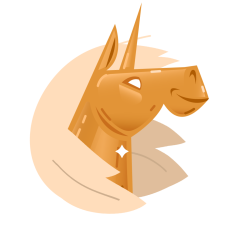Install Steam
login
|
language
简体中文 (Simplified Chinese)
繁體中文 (Traditional Chinese)
日本語 (Japanese)
한국어 (Korean)
ไทย (Thai)
Български (Bulgarian)
Čeština (Czech)
Dansk (Danish)
Deutsch (German)
Español - España (Spanish - Spain)
Español - Latinoamérica (Spanish - Latin America)
Ελληνικά (Greek)
Français (French)
Italiano (Italian)
Bahasa Indonesia (Indonesian)
Magyar (Hungarian)
Nederlands (Dutch)
Norsk (Norwegian)
Polski (Polish)
Português (Portuguese - Portugal)
Português - Brasil (Portuguese - Brazil)
Română (Romanian)
Русский (Russian)
Suomi (Finnish)
Svenska (Swedish)
Türkçe (Turkish)
Tiếng Việt (Vietnamese)
Українська (Ukrainian)
Report a translation problem

















![.png] .png]](https://steamuserimages-a.akamaihd.net/ugc/1649970118032463905/C0C15F2CBAE5217BF0C4E69A42947A6CDD96BAFE/)
![.png] .png]](https://steamuserimages-a.akamaihd.net/ugc/1649970118032490385/89F6CC3649690AC263B599011CA32E60BBA09421/)
![.png] .png]](https://steamuserimages-a.akamaihd.net/ugc/1649970118032494981/5EBC63843B54D370F6852E25681D70F634FA5314/)
![.png] .png]](https://steamuserimages-a.akamaihd.net/ugc/1649970118032502601/1DE4EC82FC429F09EECD1AD46E14AEB62930AF64/)


![.png] .png]](https://steamuserimages-a.akamaihd.net/ugc/1649970118032679523/EA0B12BD7E305F1AB6D5685E951DE9EF70F142EF/)
![.png] .png]](https://steamuserimages-a.akamaihd.net/ugc/1649970118032689858/2A122033D346609546C839504D0F77A7D36B5377/)
![.png] .png]](https://steamuserimages-a.akamaihd.net/ugc/1649970118032695063/05220AFBBAC4E639EB64943145AEB5AD5A25E15F/)
![.png] .png]](https://steamuserimages-a.akamaihd.net/ugc/1649970118032709463/7C8181E115E4CE0B25B781E0B7E6715E422CF770/)
![.png] .png]](https://steamuserimages-a.akamaihd.net/ugc/1649970118032717100/0220A5EA91389AFD01E92C7783C9625E032A1A1F/)
![.png] .png]](https://steamuserimages-a.akamaihd.net/ugc/1649970118032725856/CF6DB9CB16BFFC168BEEB4E7F22D0094201391F9/)
![.png] .png]](https://steamuserimages-a.akamaihd.net/ugc/1649970118032672596/65B56DB4969848B0688629EEC111E6BC0C67067E/)
![.png] .png]](https://steamuserimages-a.akamaihd.net/ugc/1649970118032748833/A02FC0104CDF1585A016C0C63E4D05A766ABD393/)
![.png] .png]](https://steamuserimages-a.akamaihd.net/ugc/1649970118032762239/56DE2D8395FBA2123FD42166ED24D152A4B4E1CA/)
![.png] .png]](https://steamuserimages-a.akamaihd.net/ugc/1649970118032786533/6B4B432286B450CF9B430B02C131B29304A77A21/)
![.png] .png]](https://steamuserimages-a.akamaihd.net/ugc/1649970118032787875/3400863647B0BD84E0B3A21755017CE1CD5D62FA/)
![.png] .png]](https://steamuserimages-a.akamaihd.net/ugc/1649970118032839163/CD92F7F7D036A085F9B00F98D553555E768F4DB9/)
![.png] .png]](https://steamuserimages-a.akamaihd.net/ugc/1649970118032846862/A9123155A84D0AB6909C0156270E196B794DF5FA/)
![.png] .png]](https://steamuserimages-a.akamaihd.net/ugc/1649970118032889403/B96202724BA04476CABCCD6A5DB0A120D484C957/)
![.png] .png]](https://steamuserimages-a.akamaihd.net/ugc/1649970118032890040/51050A30F21B894094F8F8628CD2748835124BBE/)
![.png] .png]](https://steamuserimages-a.akamaihd.net/ugc/1649970118032939189/EAE7FE9CEEBD60FA17B2CA61ECA99217E1178689/)
![.png] .png]](https://steamuserimages-a.akamaihd.net/ugc/1649970118032944263/DEC061C10369C1F34994CF60B58FDF5CA4915707/)
![.png] .png]](https://steamuserimages-a.akamaihd.net/ugc/1649970118032958993/CF755B799087A552B28D70447EC3BD10F2E74E8F/)
![.png] .png]](https://steamuserimages-a.akamaihd.net/ugc/1649970118032965824/7DF313C4E60B2E701EBD0841F3876FB60B51BEF3/)
![.png] .png]](https://steamuserimages-a.akamaihd.net/ugc/1649970118032986814/CE732061C1E8999F3629E726163E3F82D6D6702D/)
![.png] .png]](https://steamuserimages-a.akamaihd.net/ugc/1649970118033024161/7E277C492BD1D53FAE0DEA75750CC487765F6E07/)

![.png] .png]](https://steamuserimages-a.akamaihd.net/ugc/1649970118033075189/3321B840DE3232DF3BE59591D554F16A91BA1CD5/)
![.jpg] .jpg]](https://steamuserimages-a.akamaihd.net/ugc/1649970118033076093/8F482A063B7EB9B3D8309408C8DC40C8B7543E34/)
![.jpg] .jpg]](https://steamuserimages-a.akamaihd.net/ugc/1649970118033075691/1E4616F56F7F88F9B0F3858C91FF17F12804BB6C/)
![.png] .png]](https://steamuserimages-a.akamaihd.net/ugc/1649970118033110534/CAA37BF41EDF036268325F491F0311F6B362AE60/)
![.png] .png]](https://steamuserimages-a.akamaihd.net/ugc/1649970118033122872/1D6DF3846185F1E15A0E274EF4607A1EE76A4E2F/)




TLDR yes, it's possible.